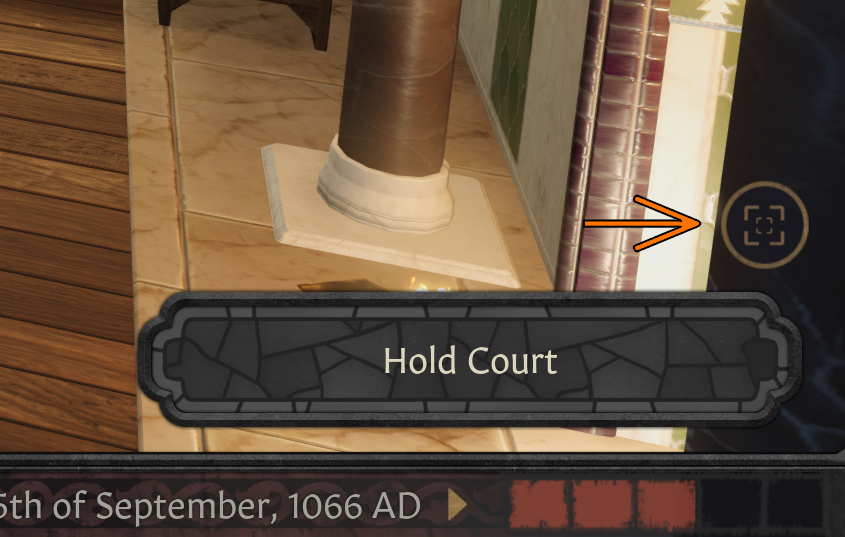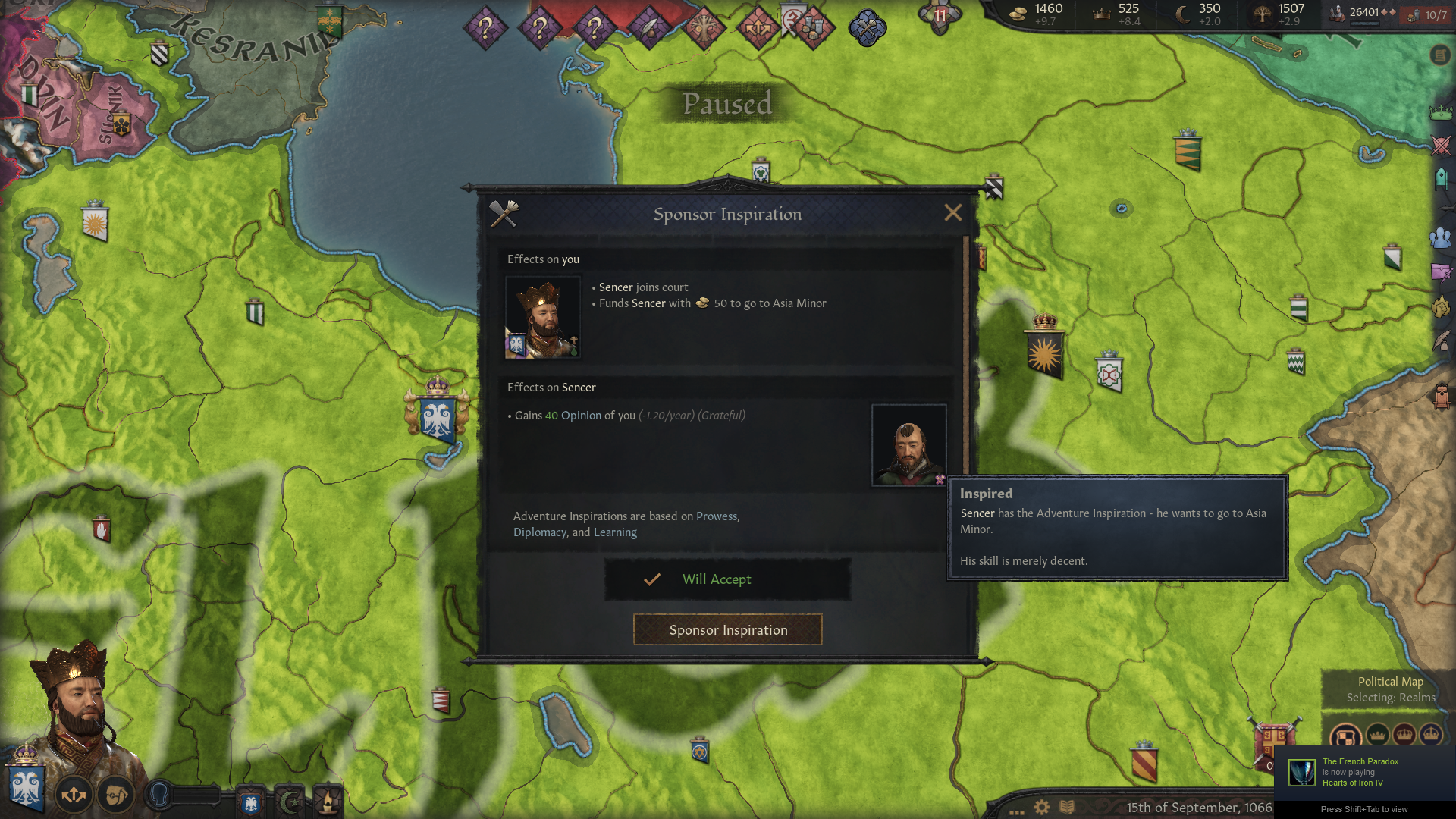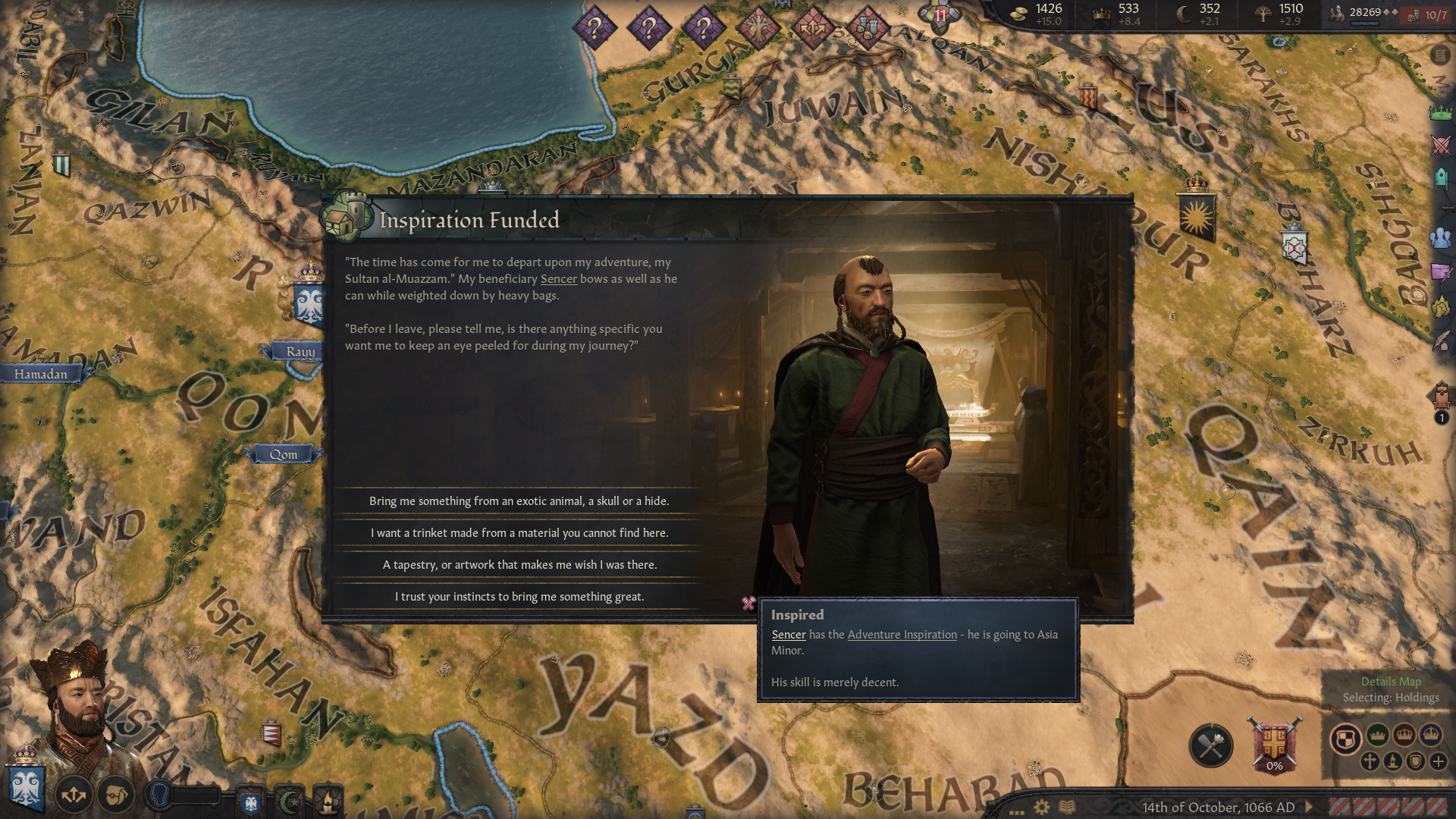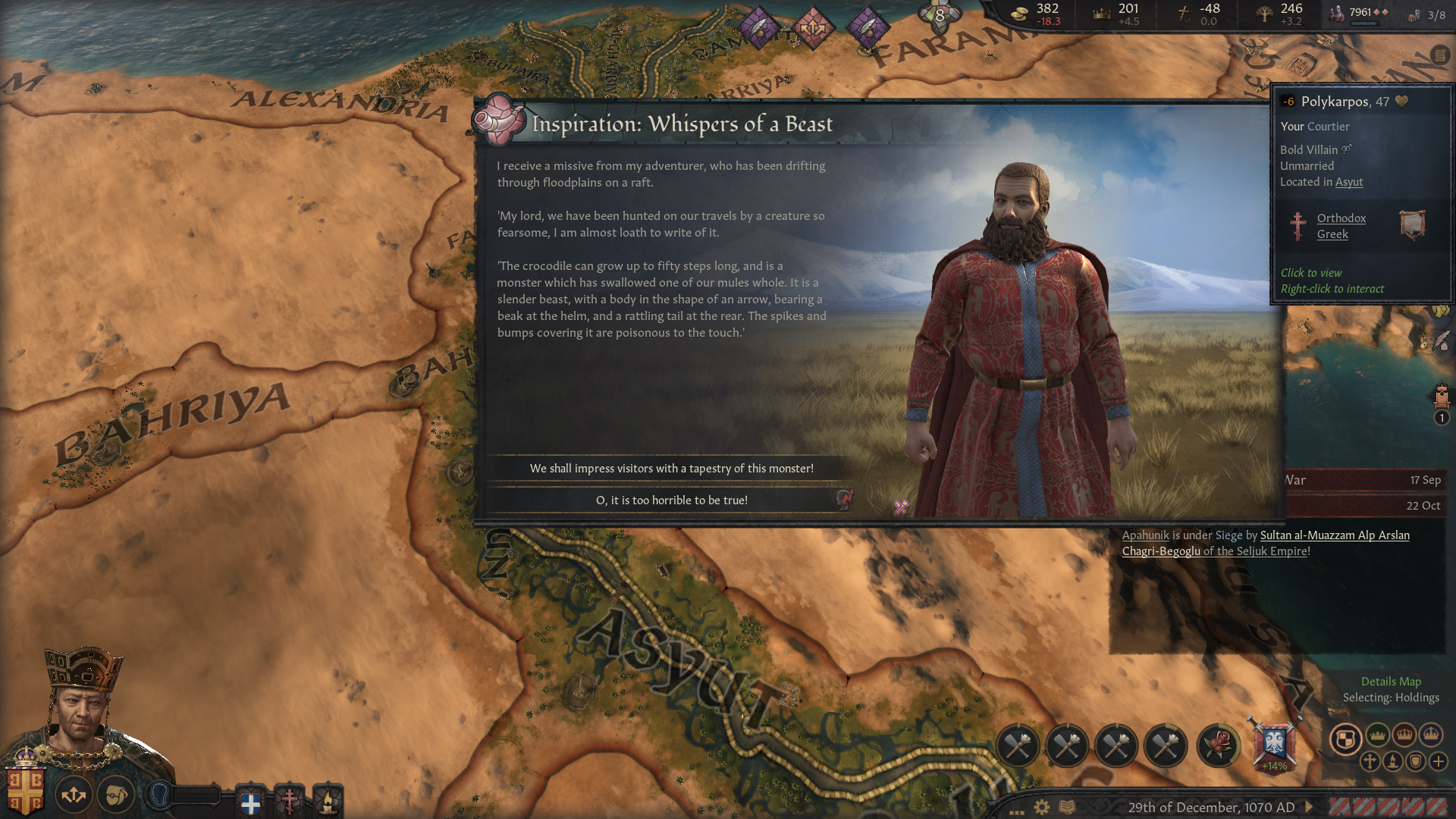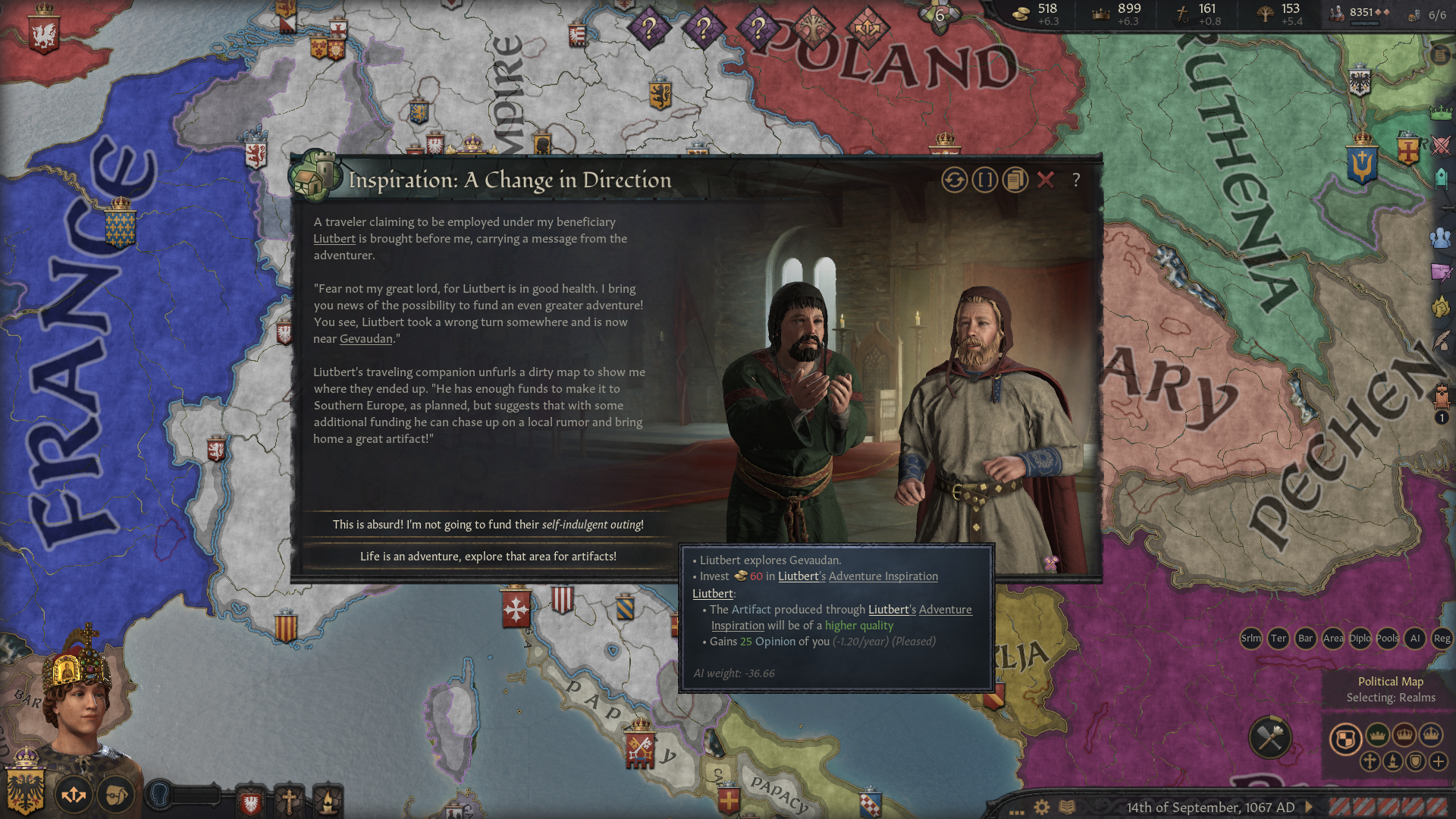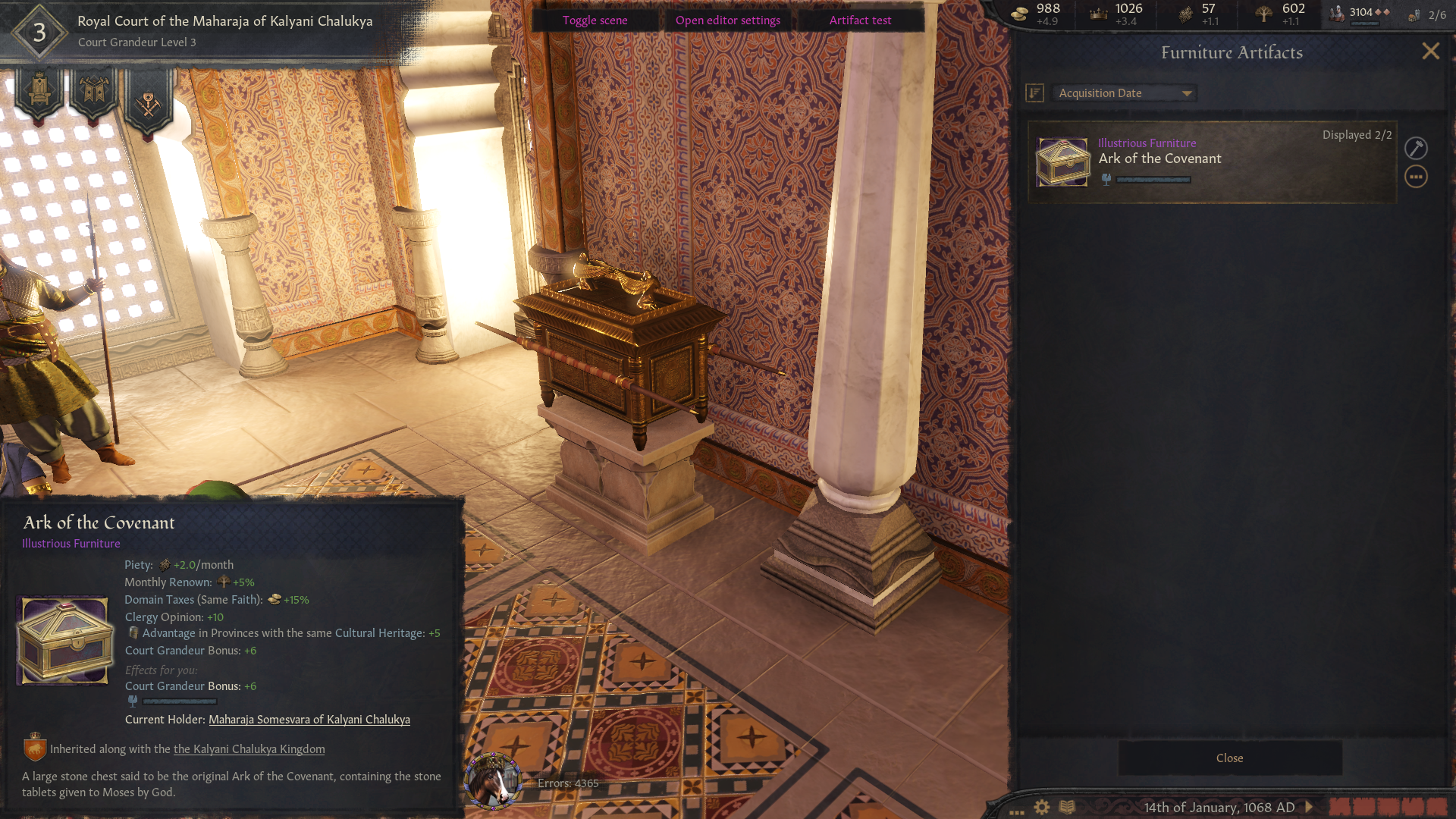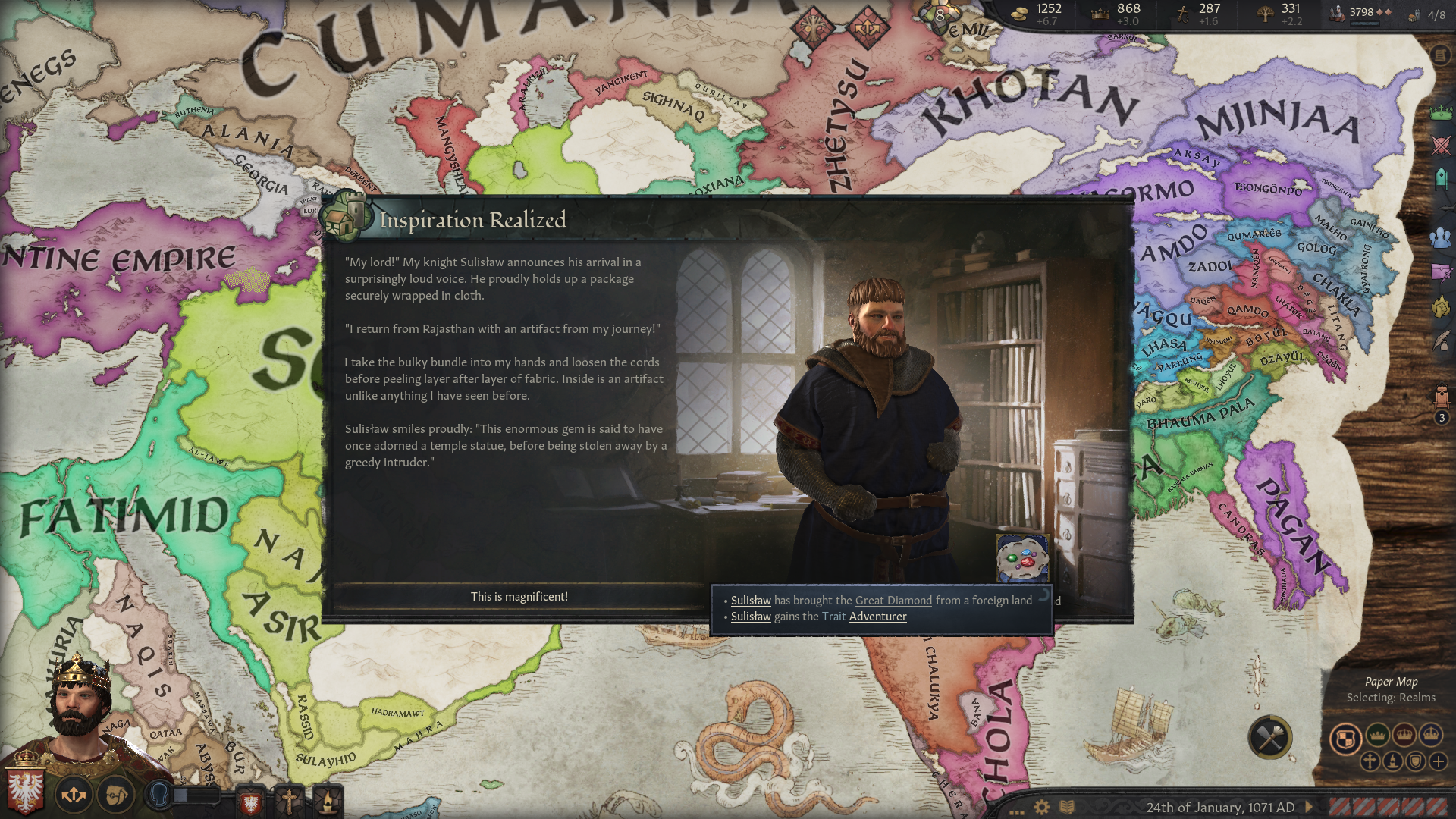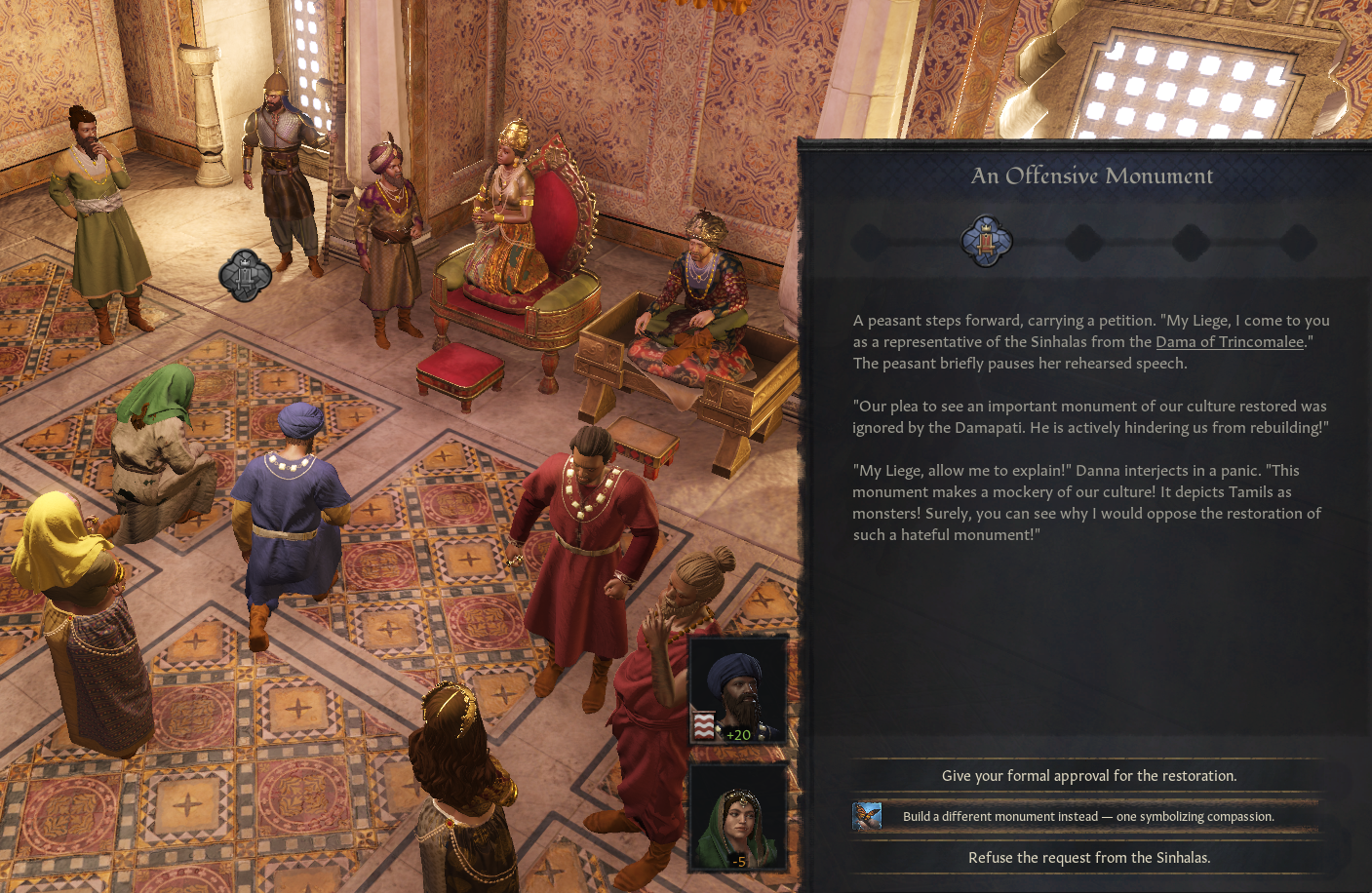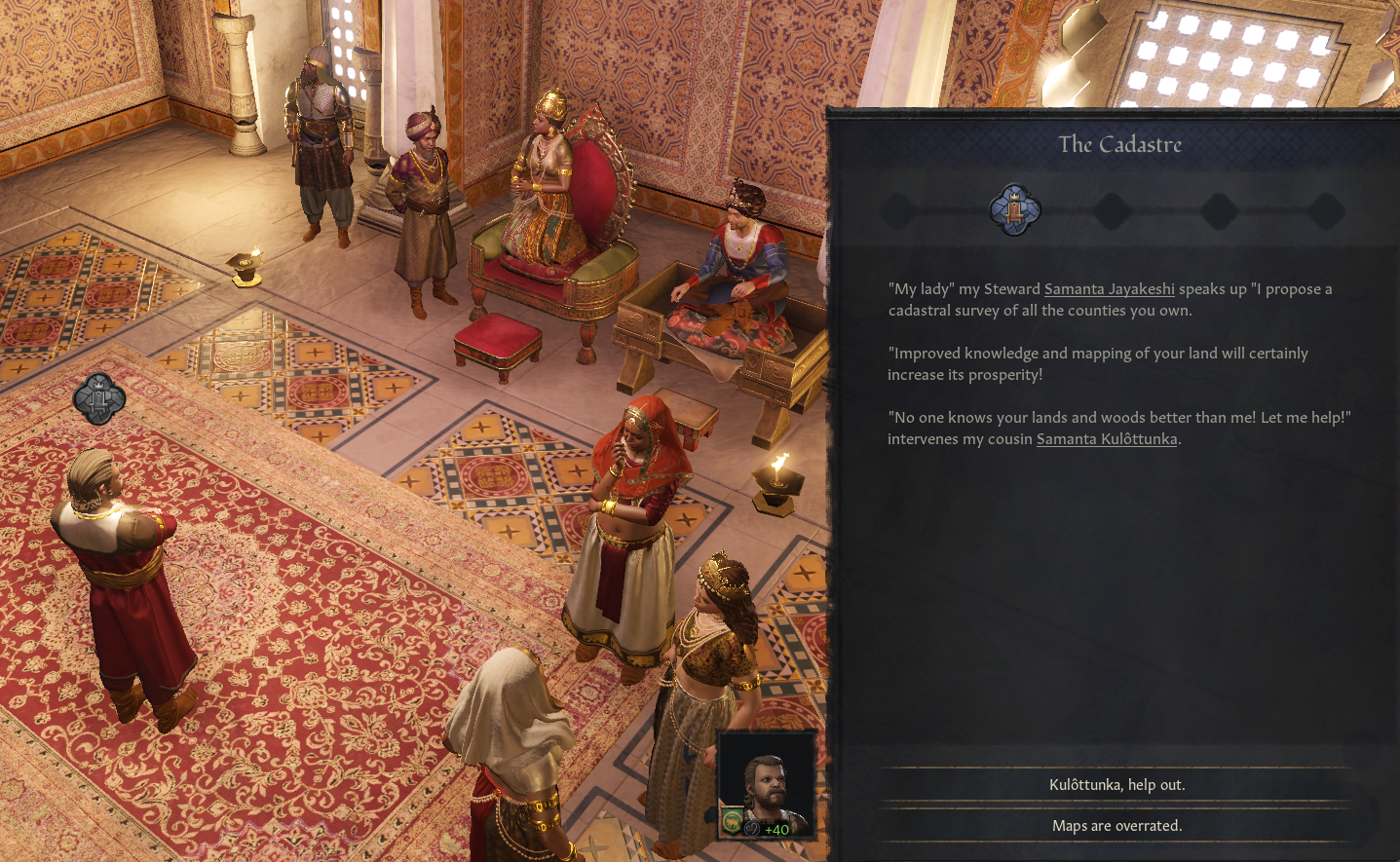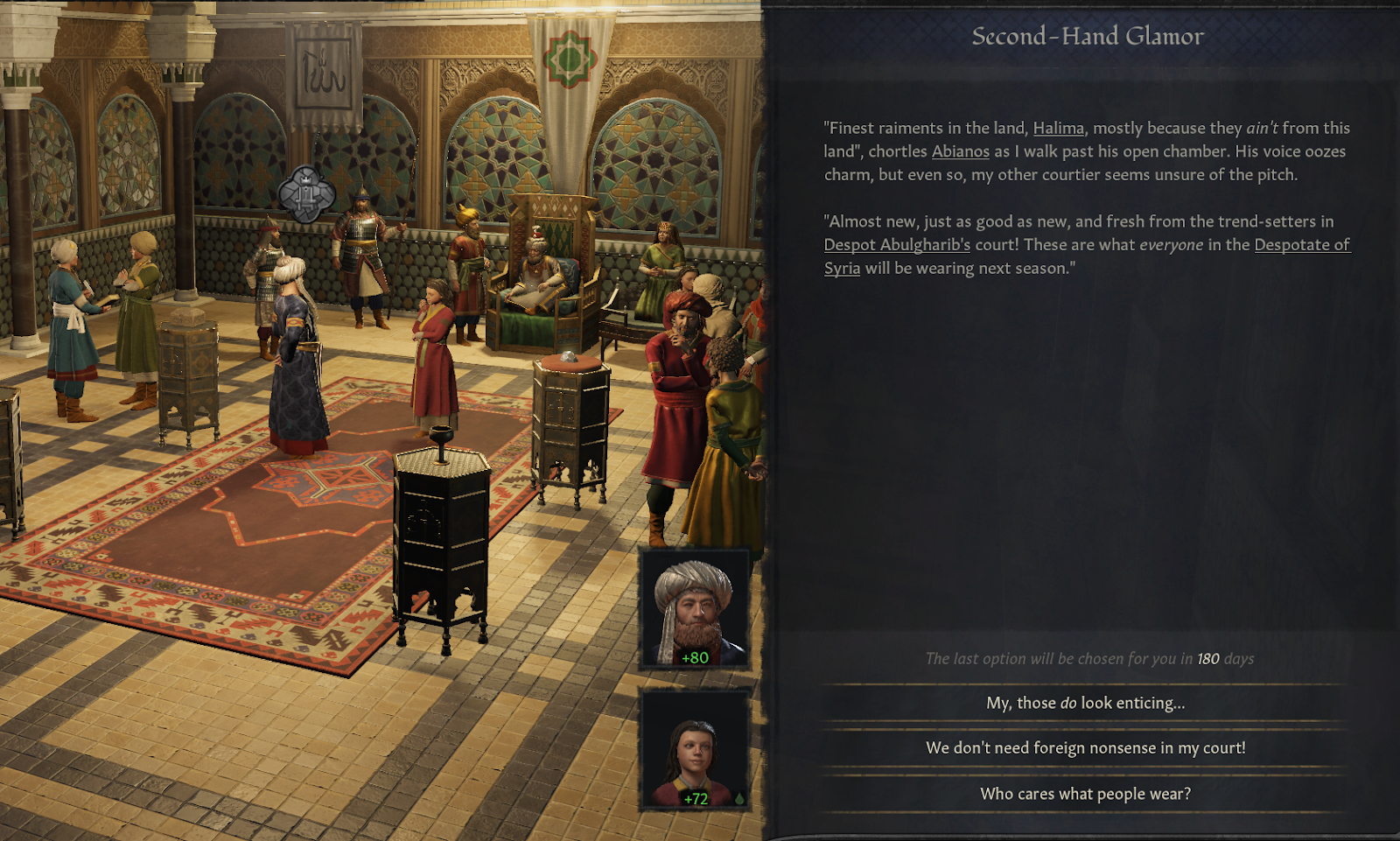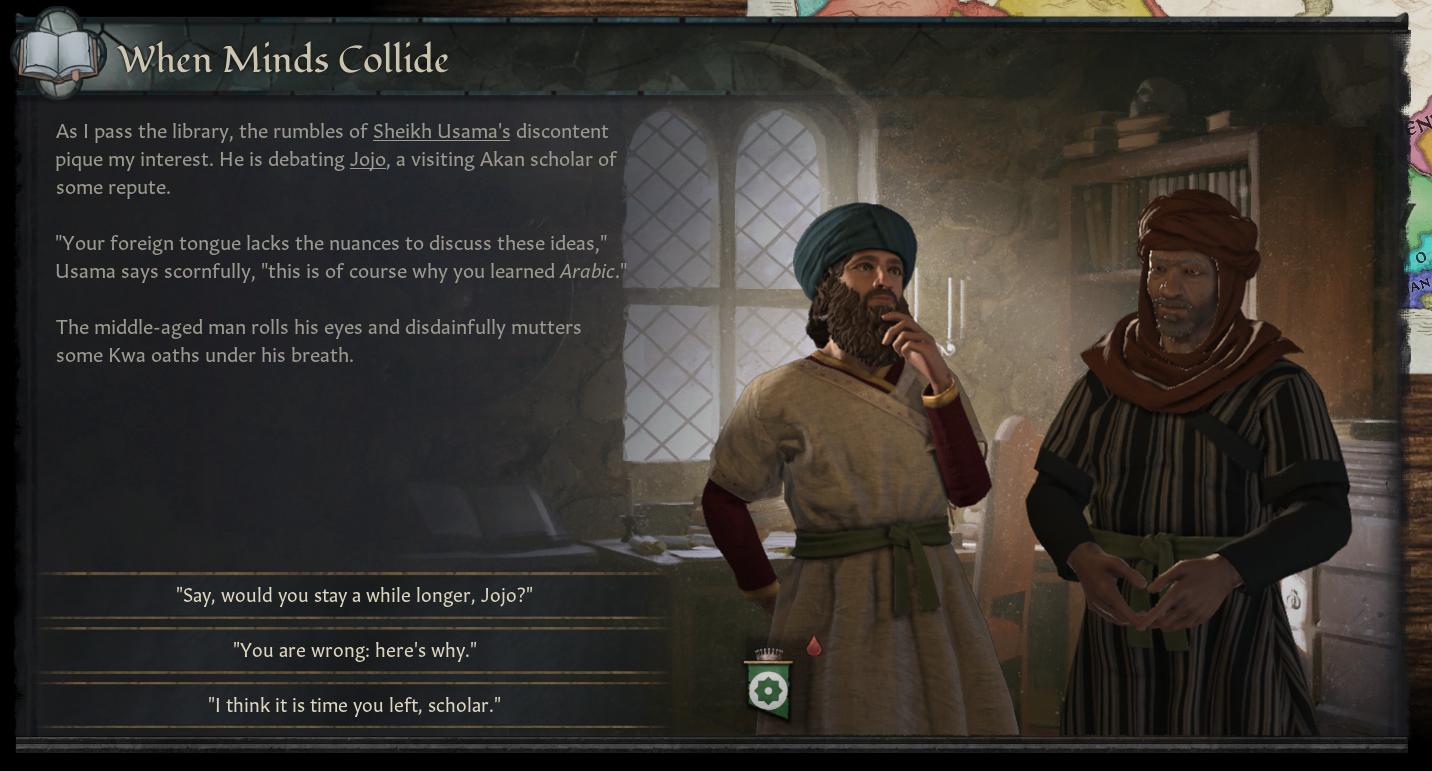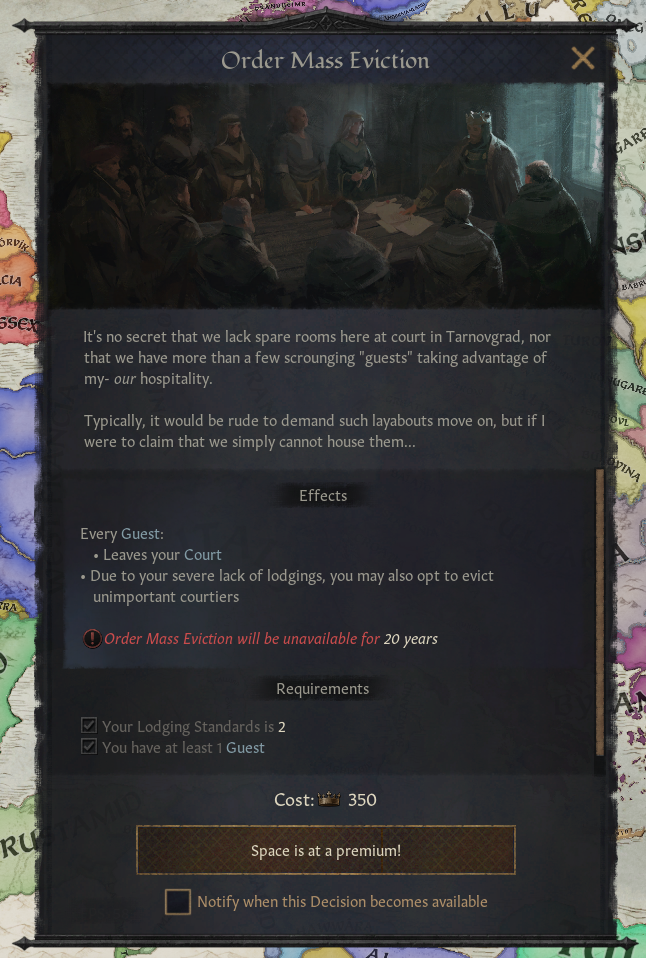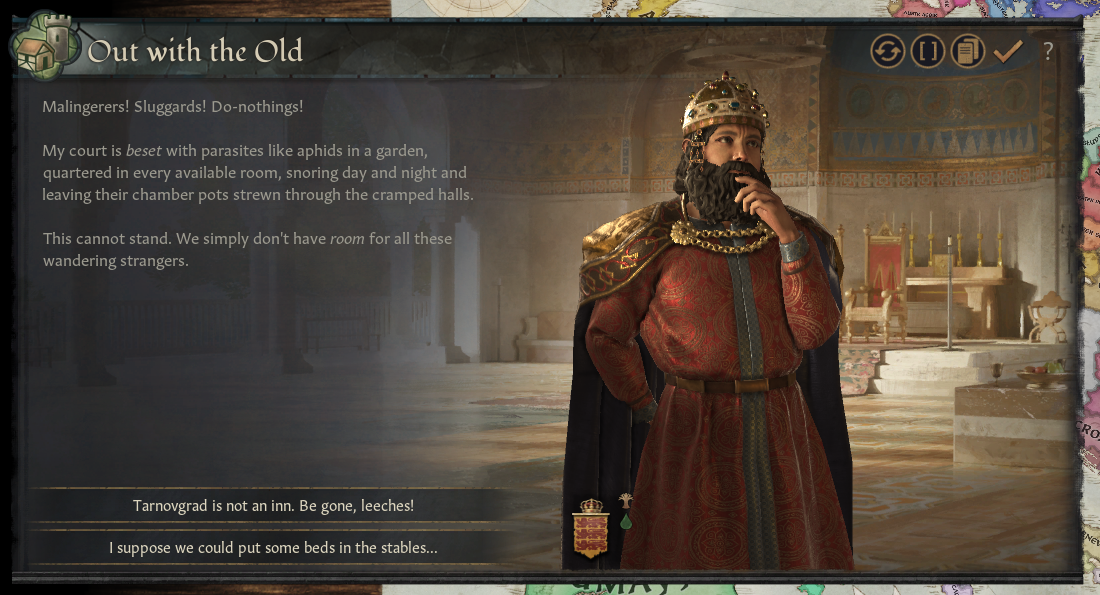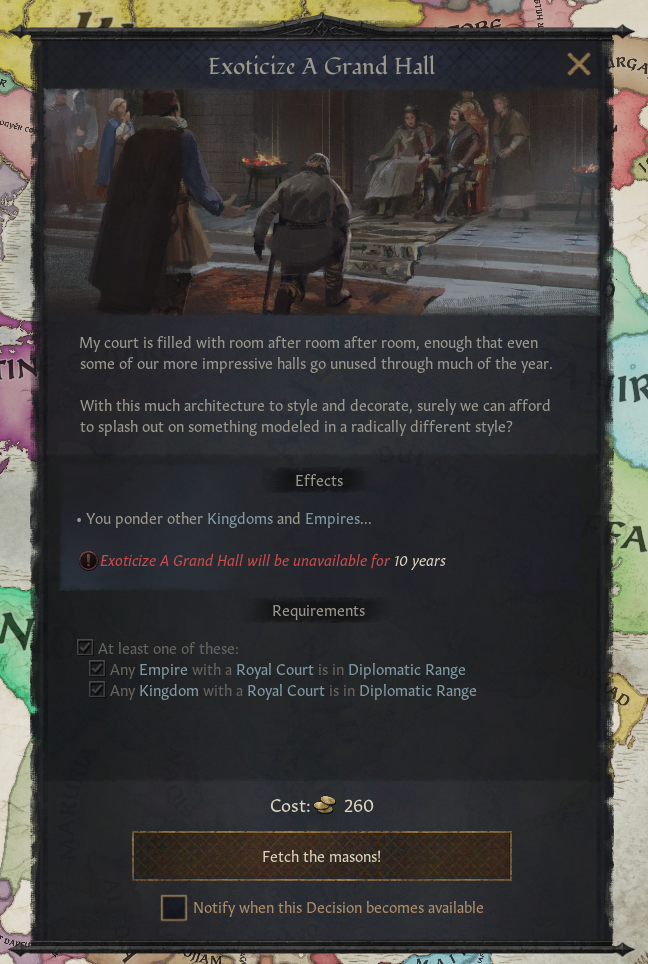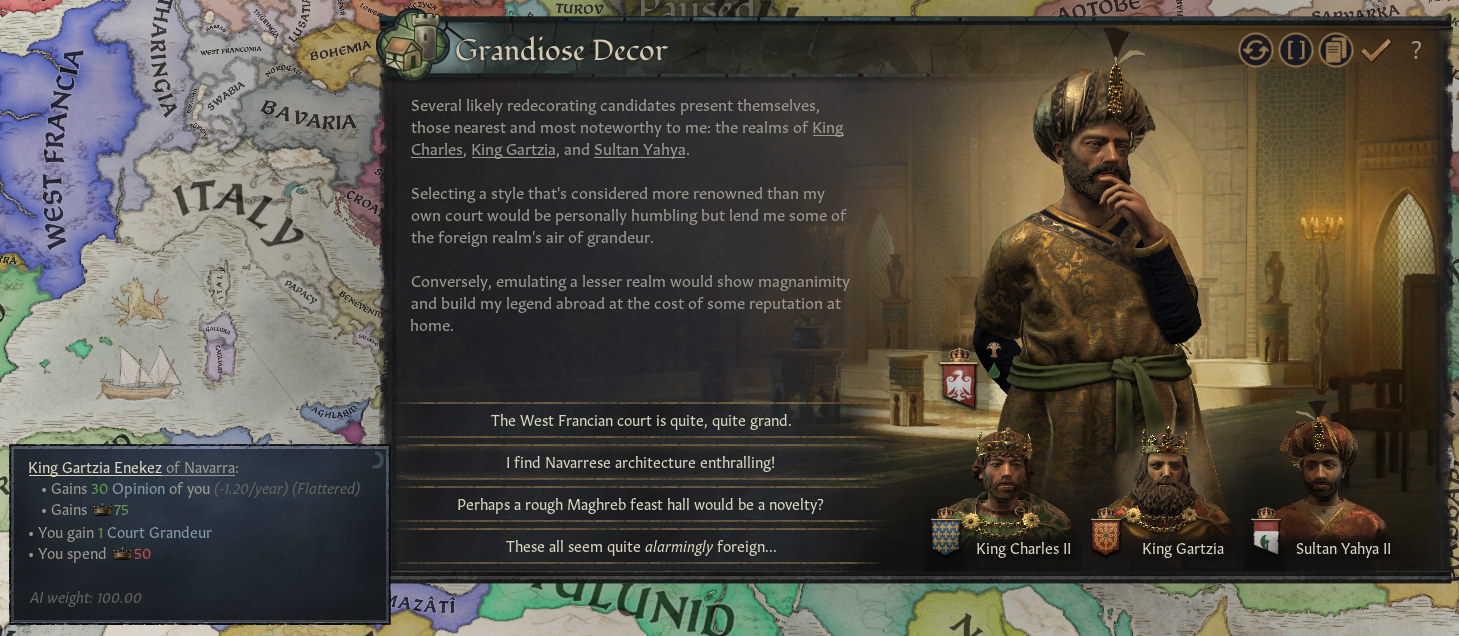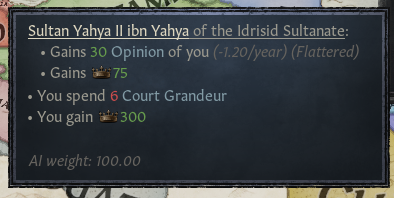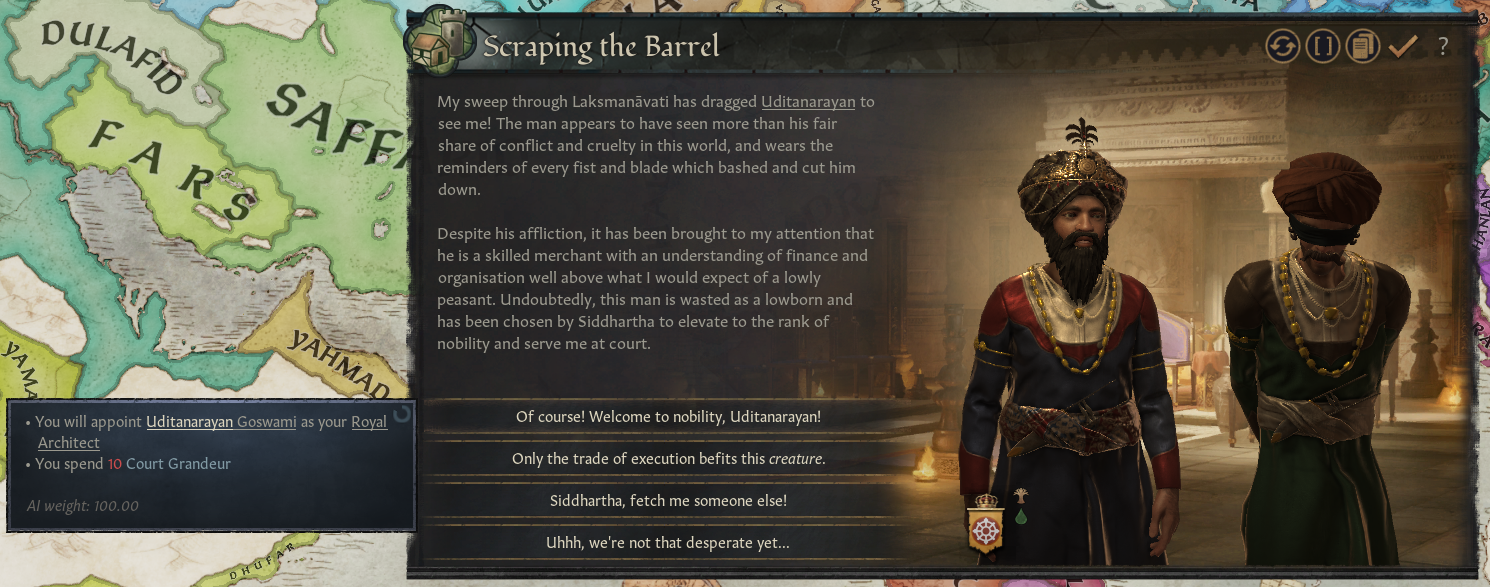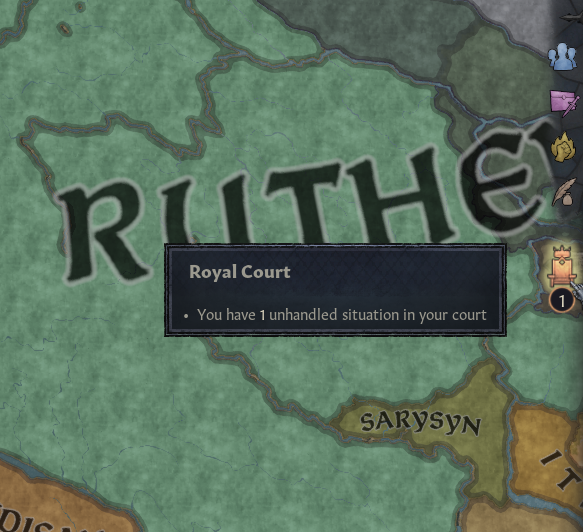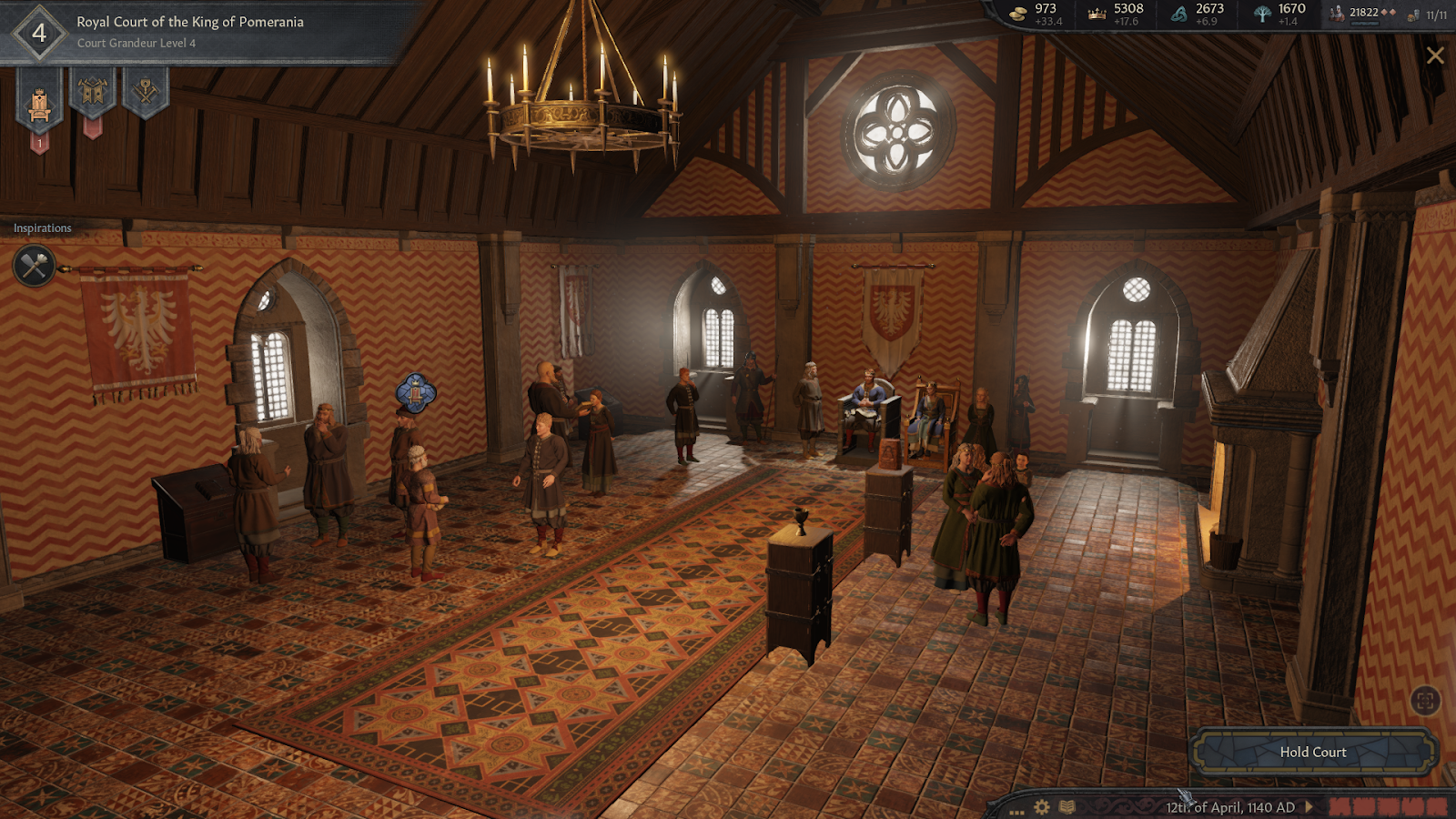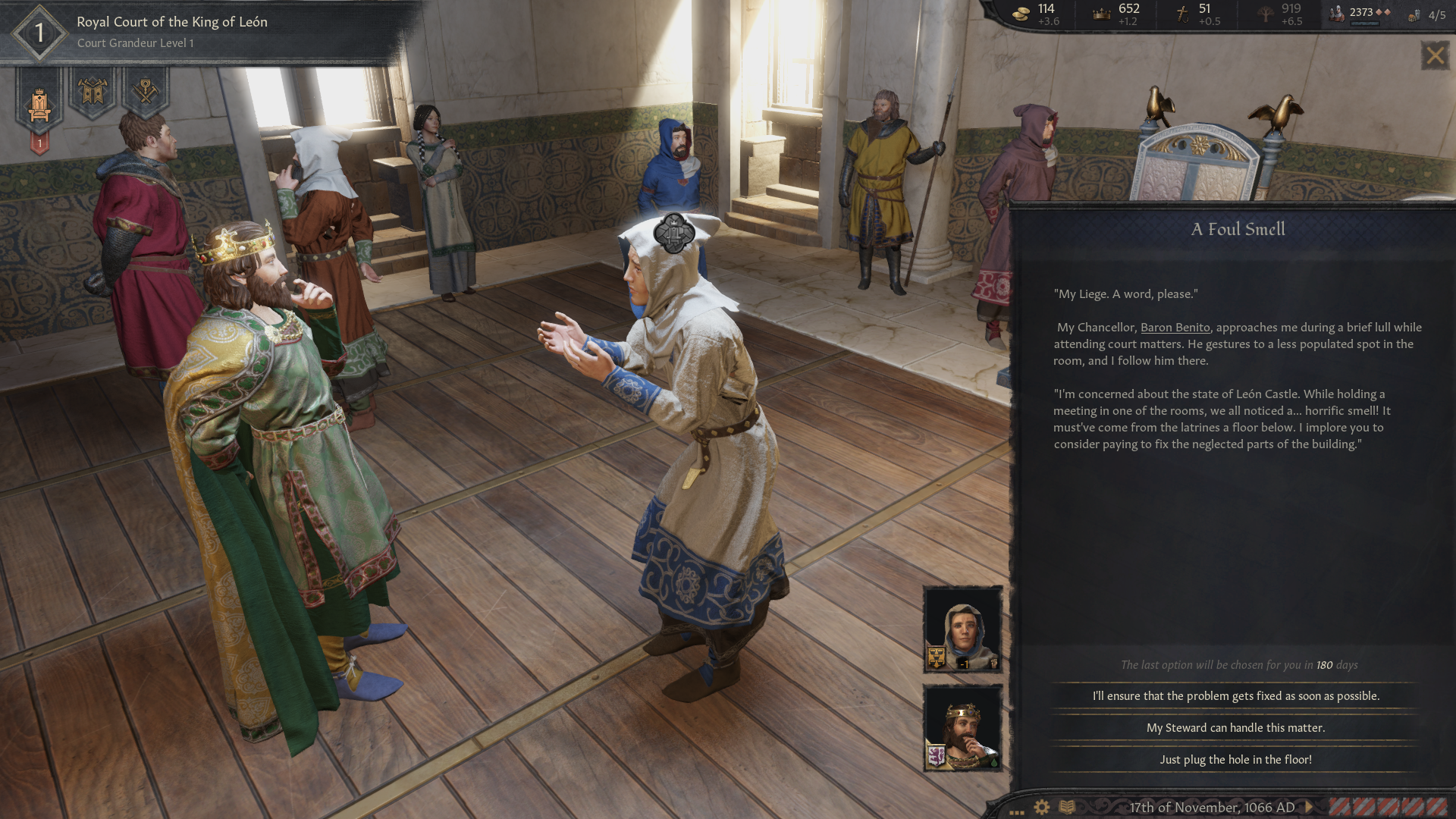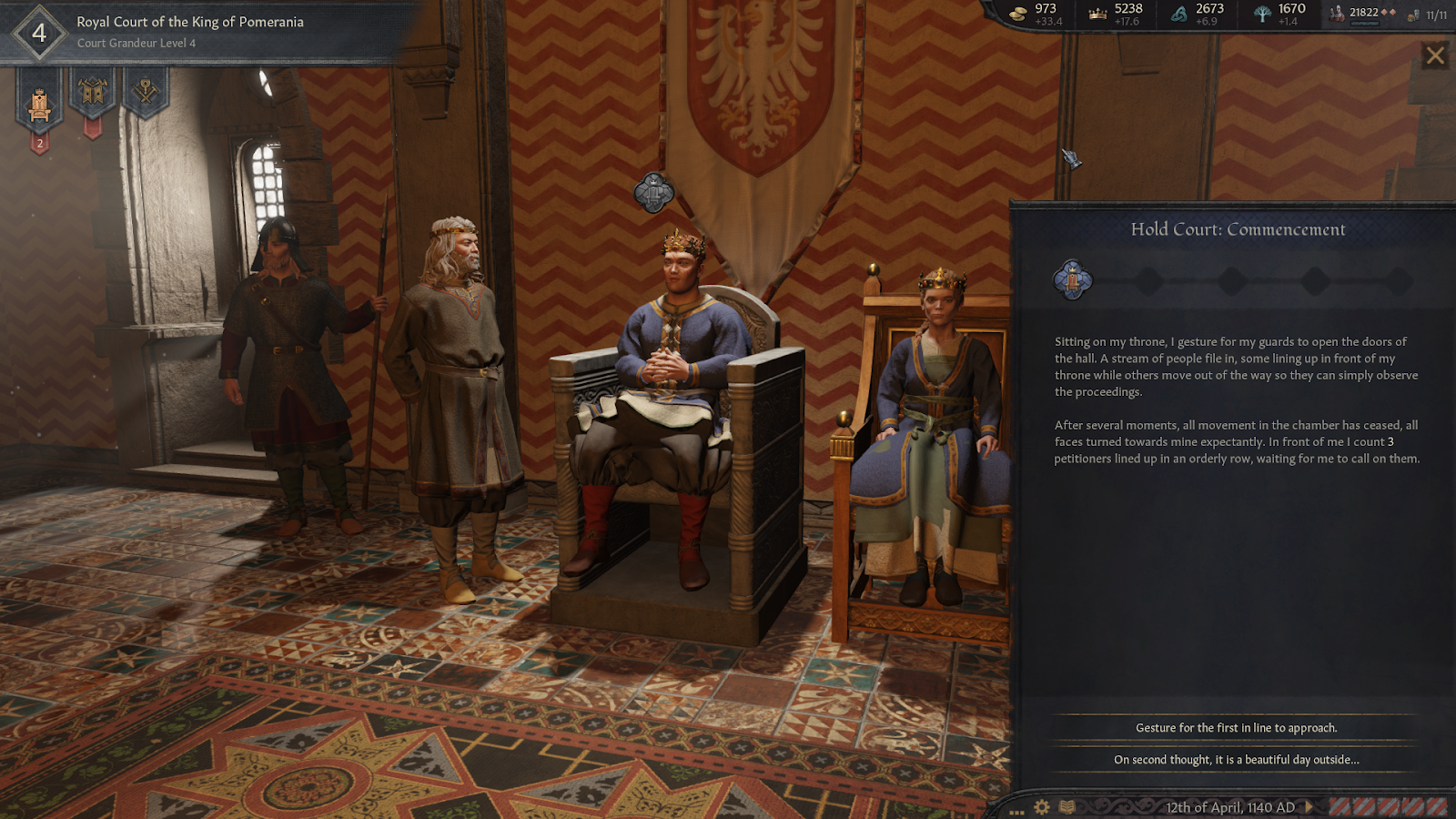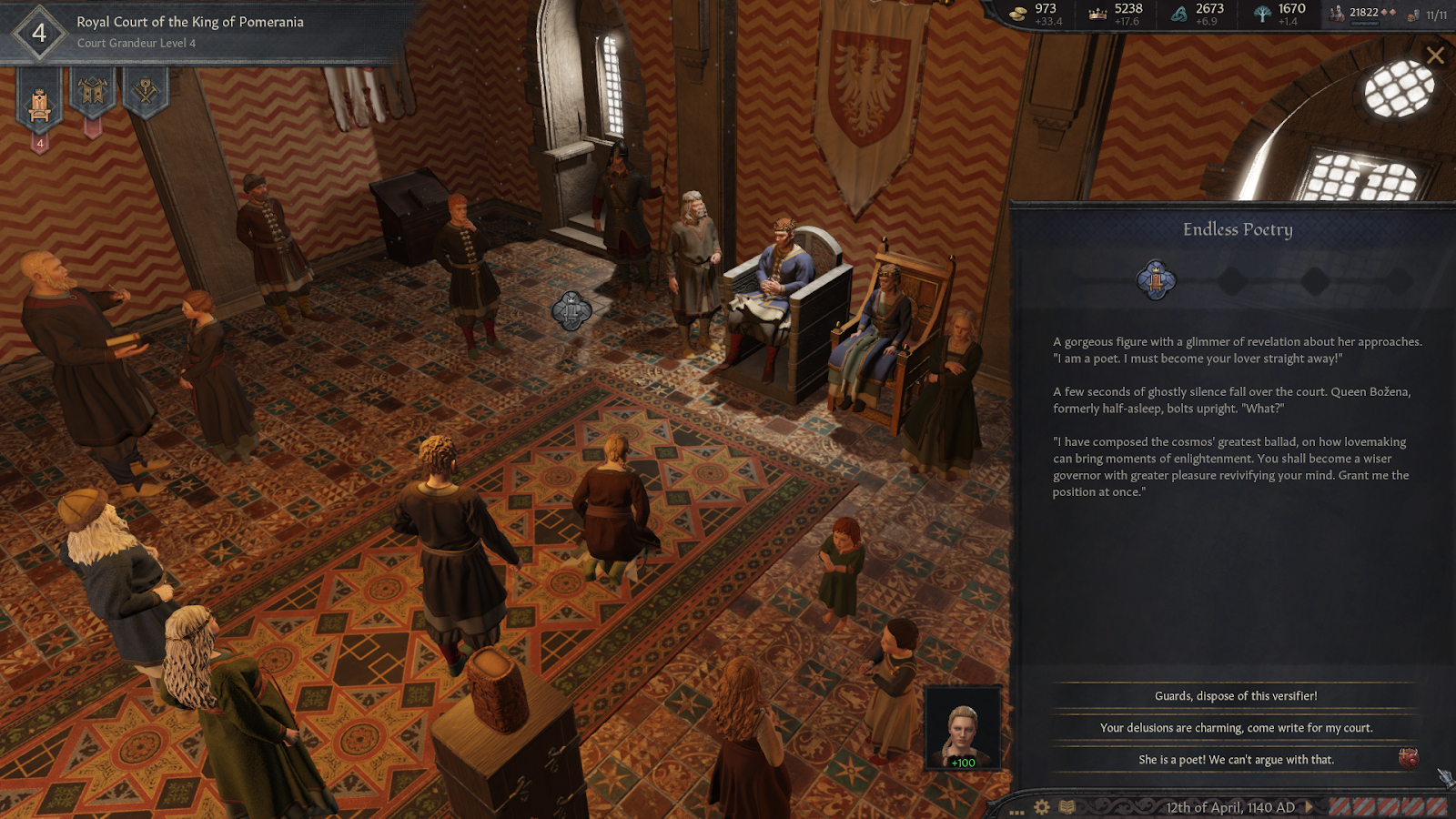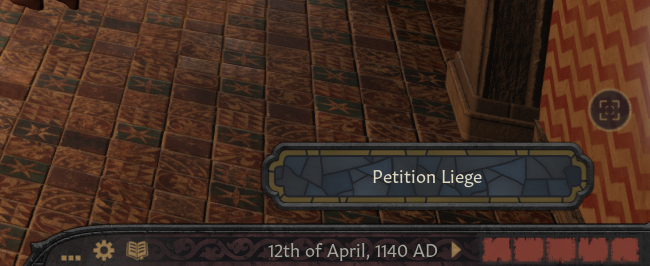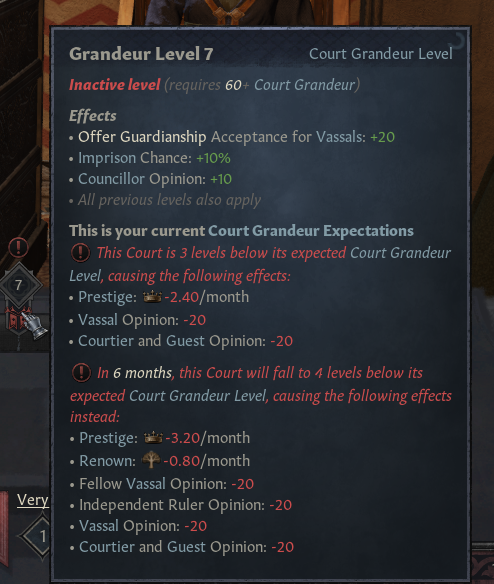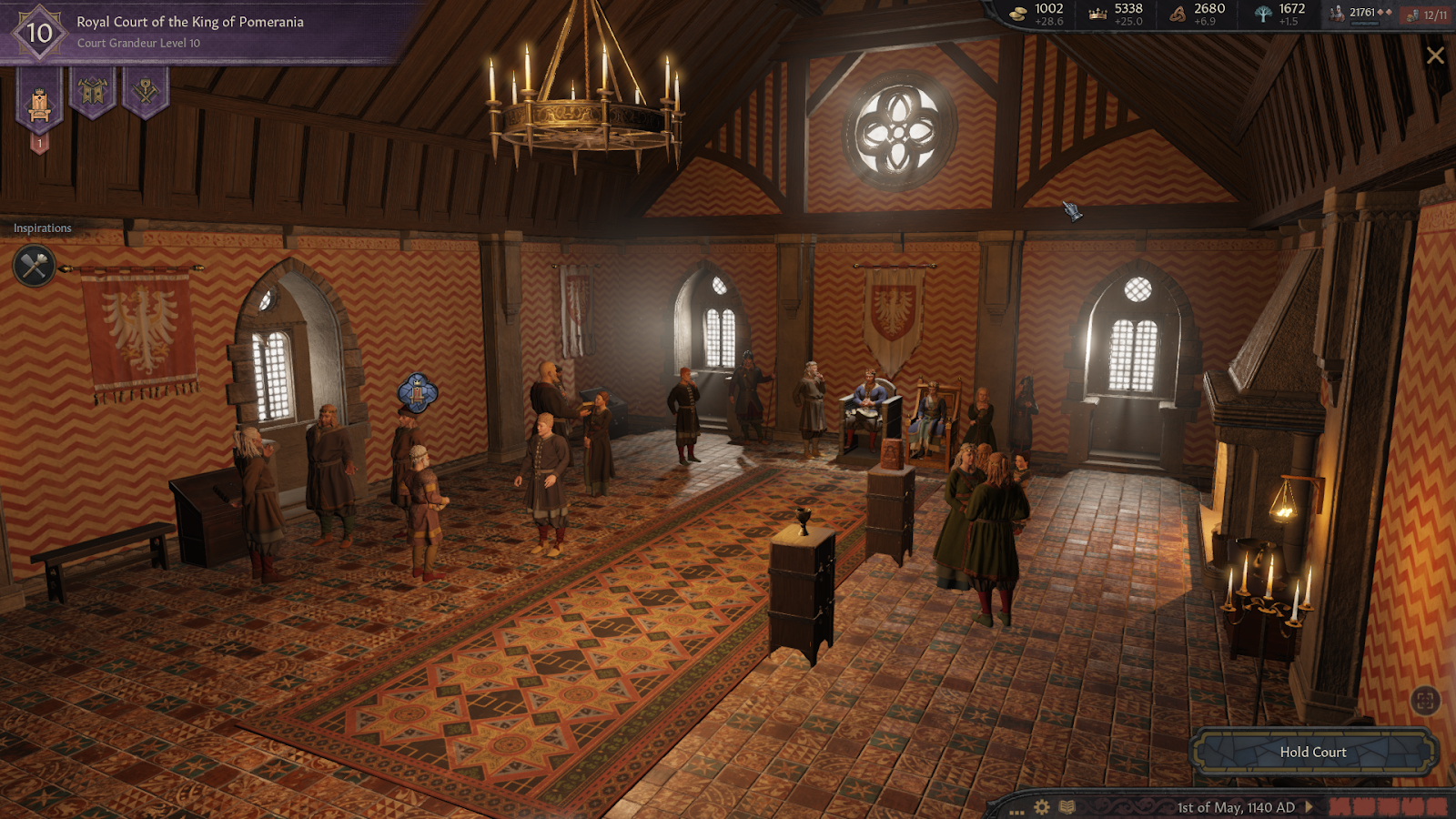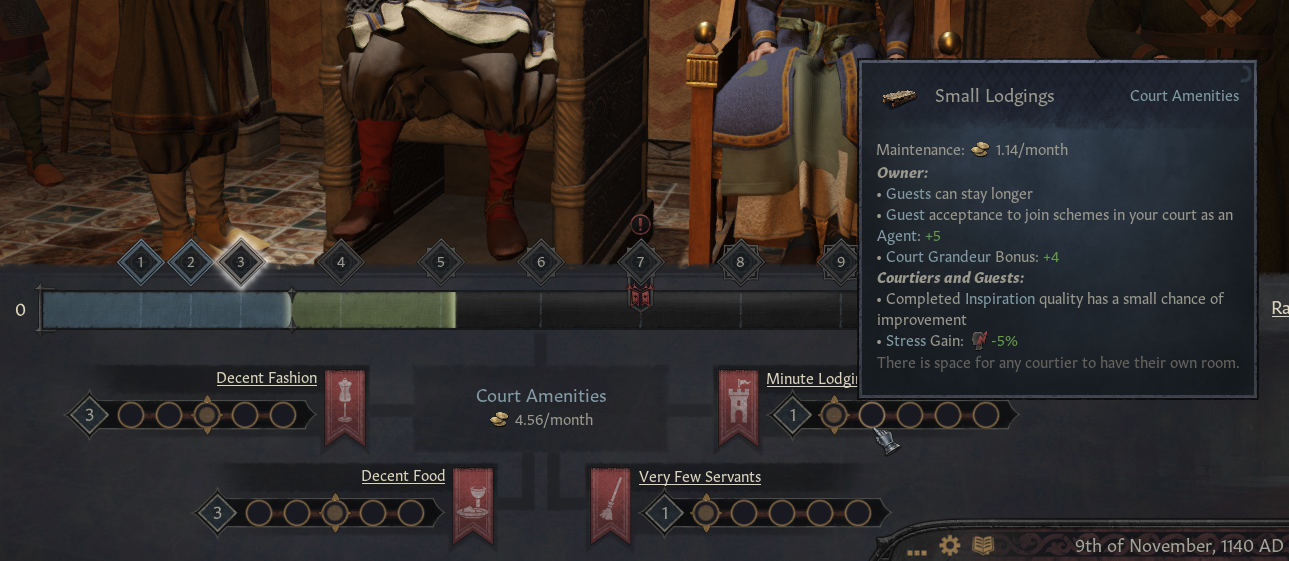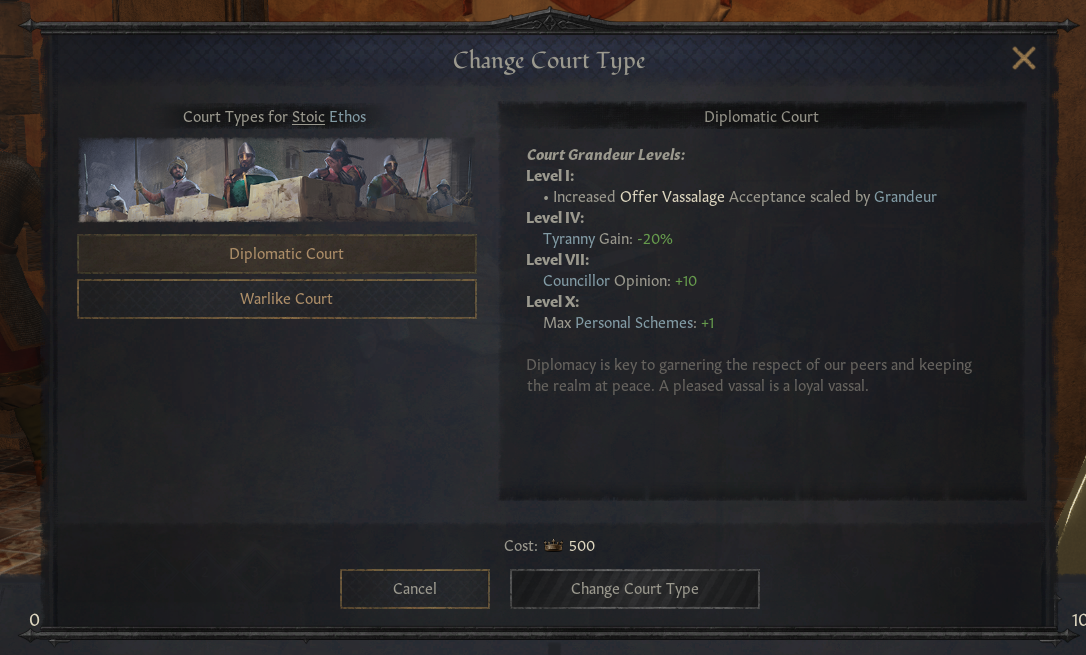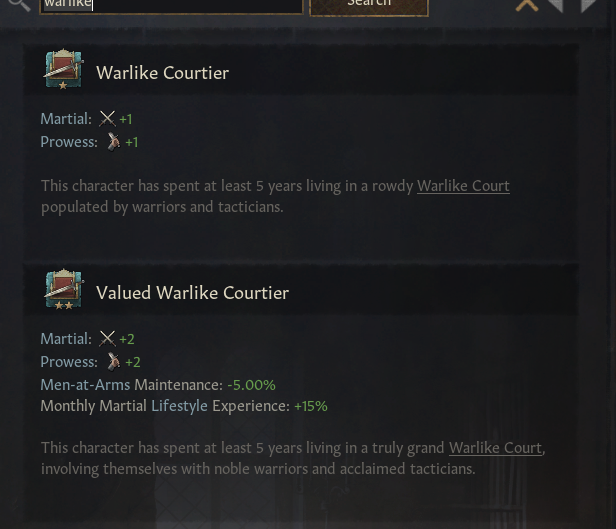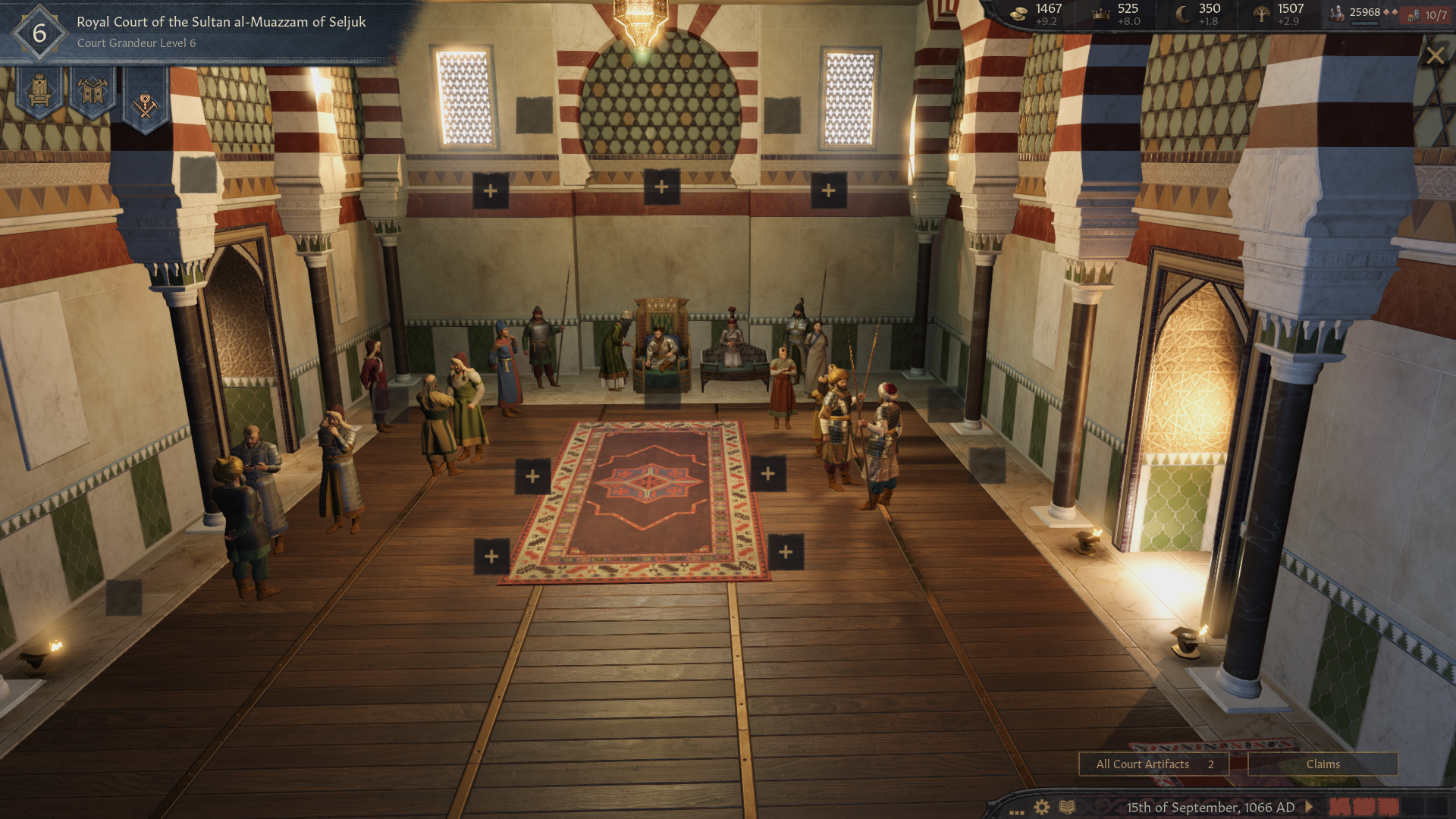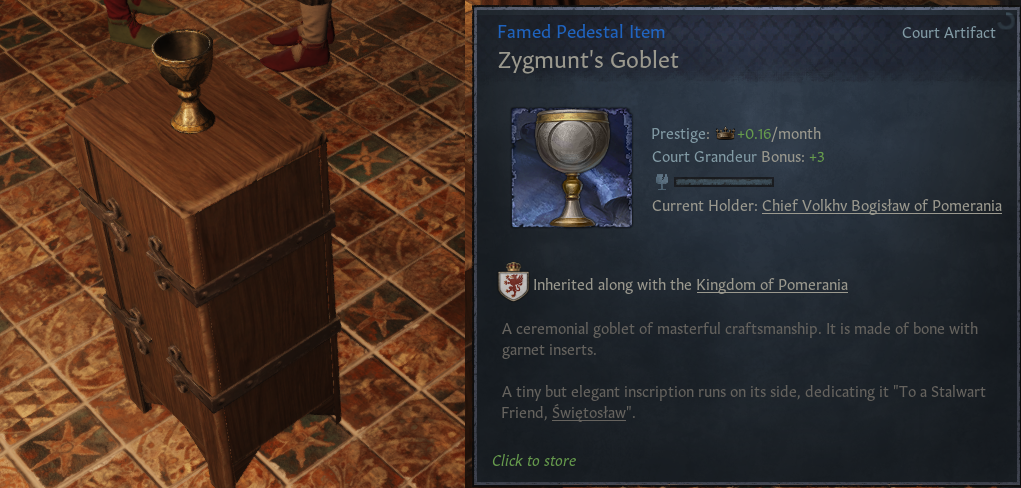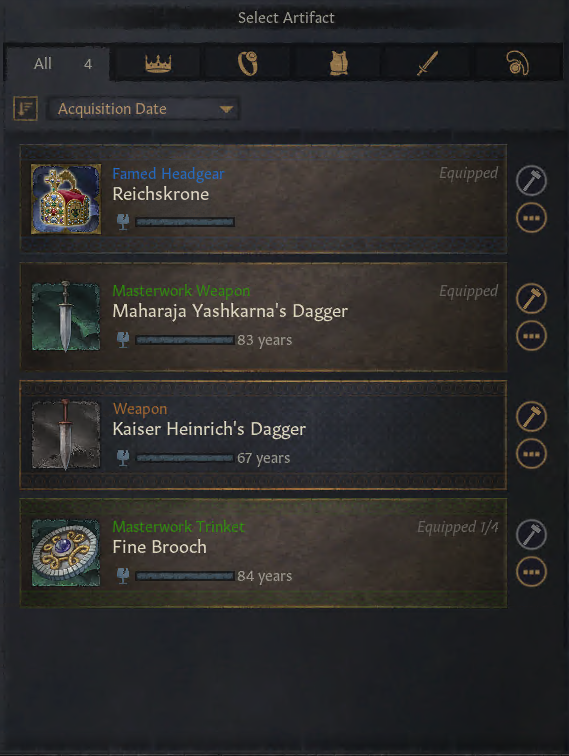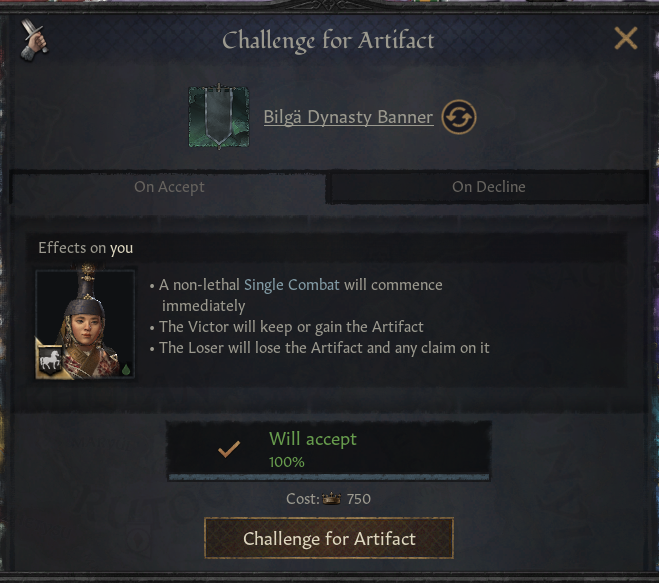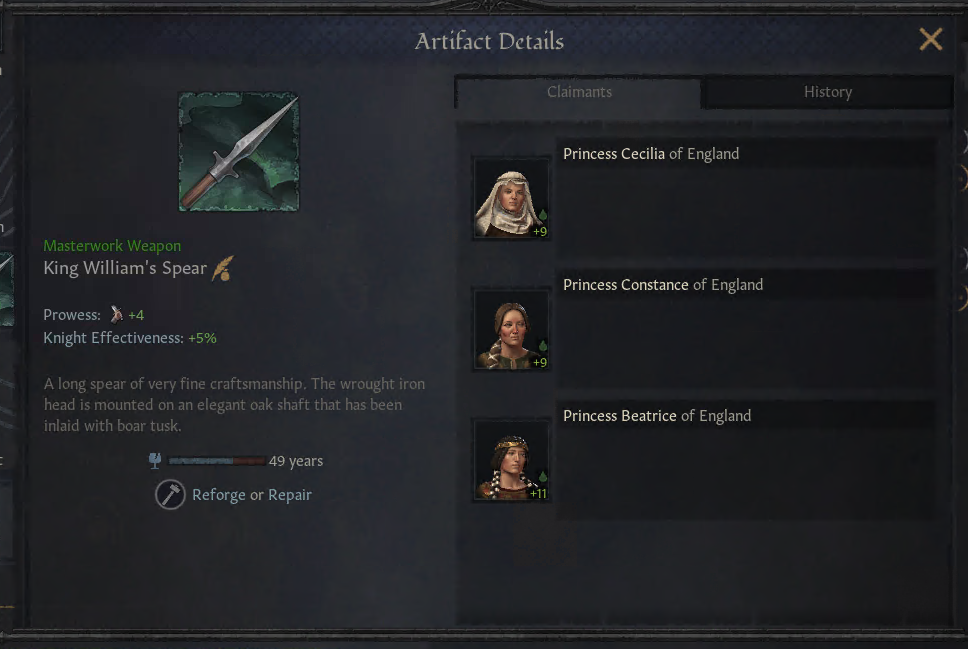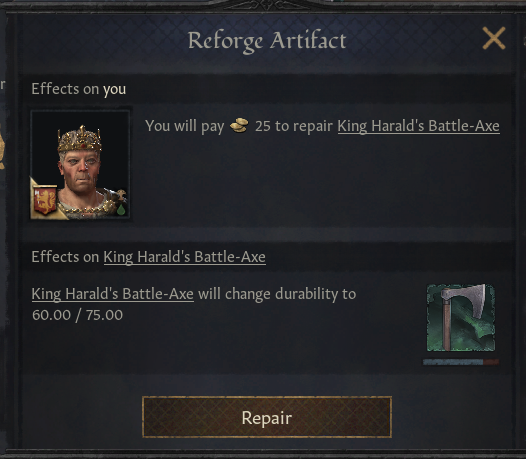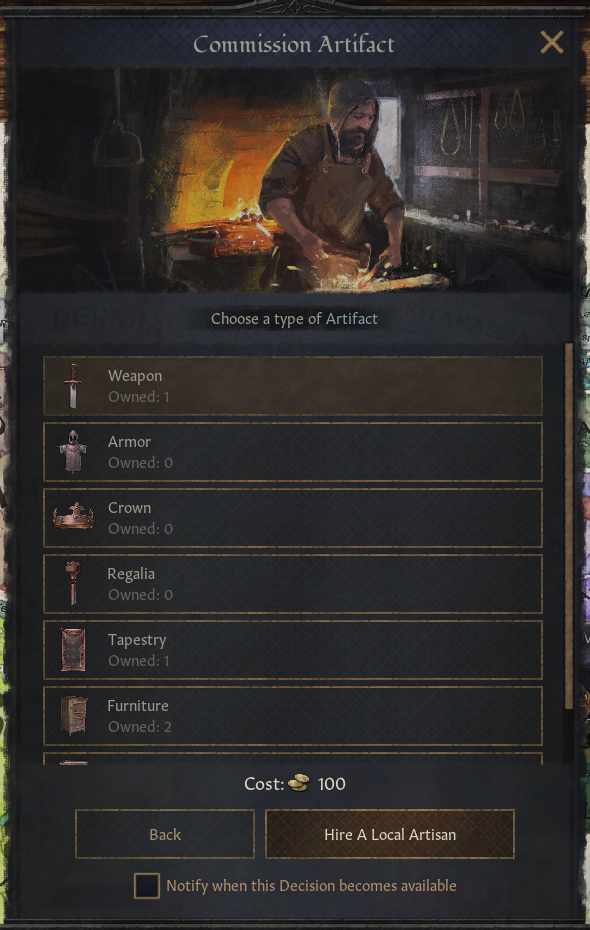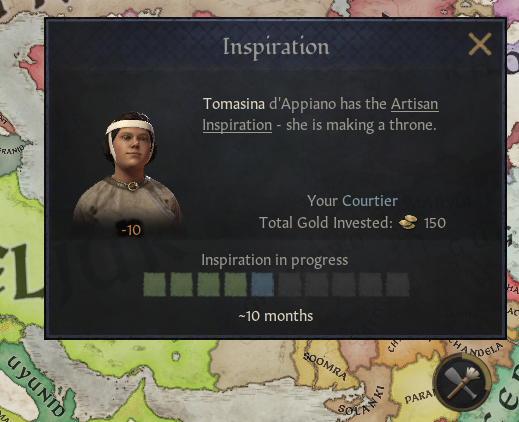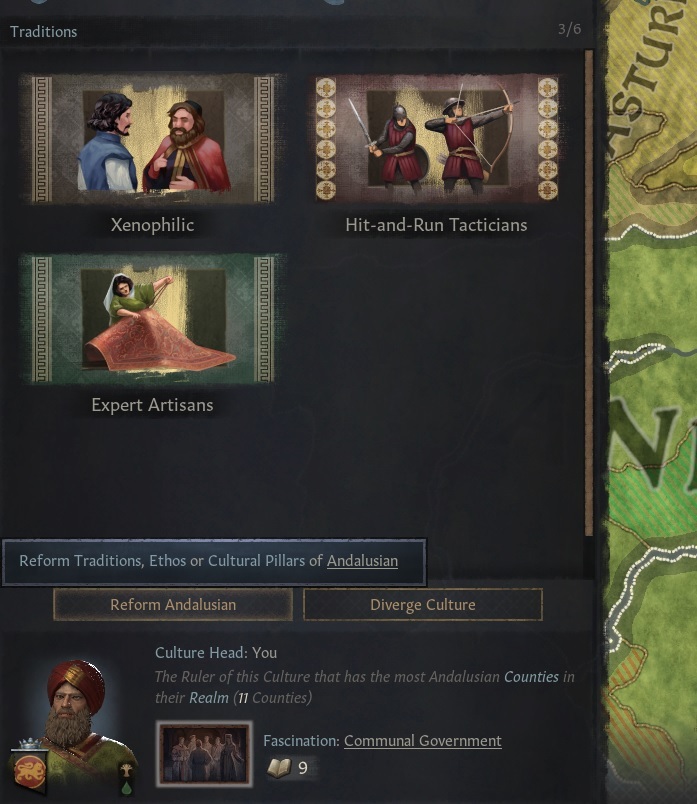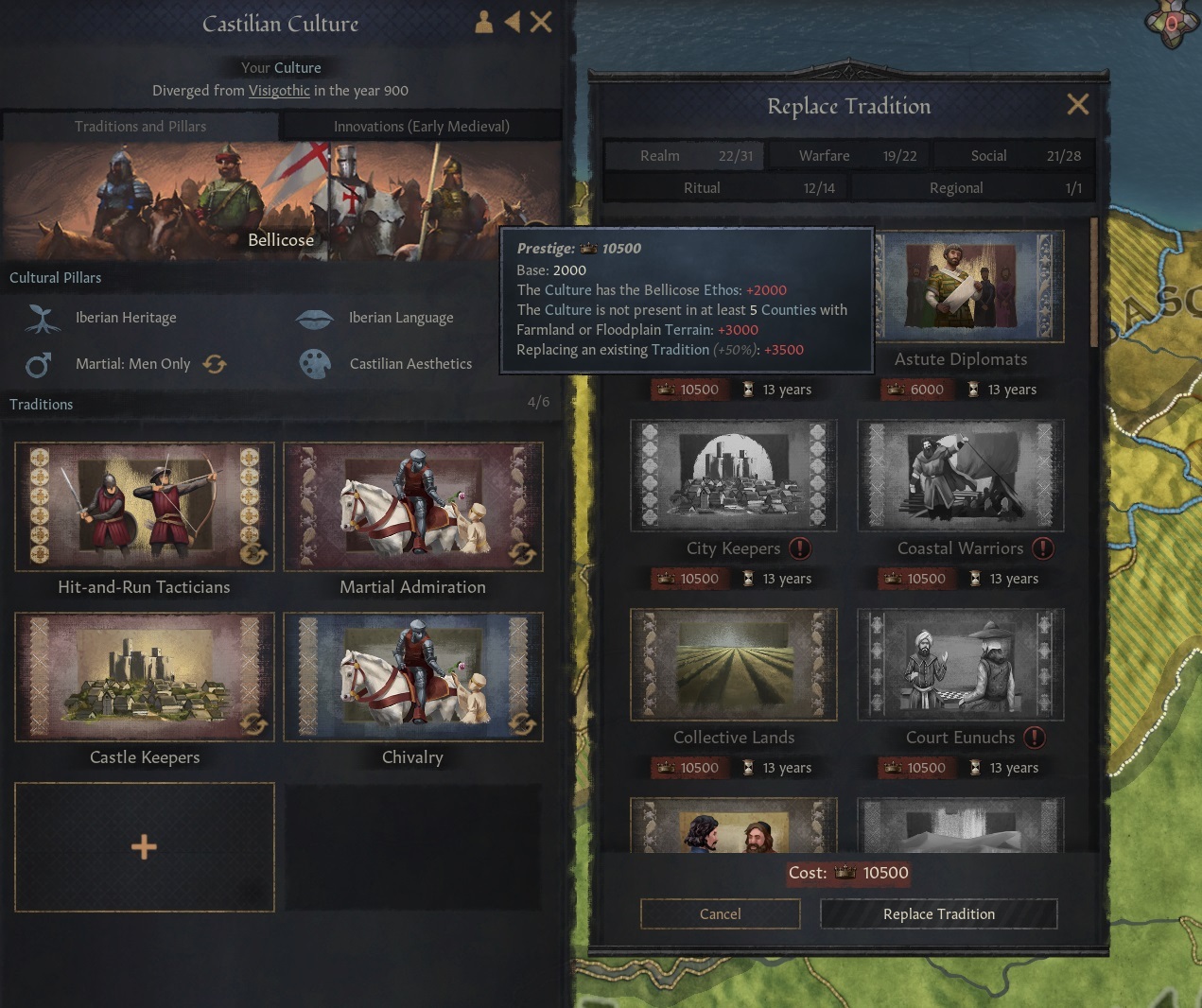
Dec 14, 2021
Crusader Kings III - xRaenboe
Greetings!
By this point most of the team is on vacation (including me, this is a scheduled post!). However, we still want to tease something that we think you’ll like!
With the Cultural Rework we’re making it more viable to rule a large and culturally diverse empire, as you all surely know. To enhance this playstyle we’ve devised a new Dynasty Legacy that focuses on strengthening multicultural realms! If you own the Royal Court expansion, you’ll get access to the new ‘Customs’ Dynasty Legacy!
💡 To fully experience our Teaser on the forums and share your thoughts, you can click the link below.
► Read our Winter Teaser #2 - Dynasty Legacy
💡 Enjoy the FAQ Royal Court and read all there is to learn about our upcoming Expansion

[Image of the Legacy Track Art]
Let's take a look at the Legacies themselves:

[Image of the first legacy]
The first legacy reinforces the link between learning languages and acceptance by adding a Cultural Acceptance bonus on completion for members of your dynasty. Quite a powerful opener, as it gives you a tool for improving acceptance with cultures outside your own realm (albeit a small one, though depending on how spread out your dynasty is it can be more or less powerful!)

[Image of the second legacy]
The second legacy improves the effectiveness of the Council Job, simple but effective. Having an extra slot for Learn Language schemes means that you can always have one running, while keeping your ‘normal’ personal scheme slot open for Swaying vassals or Seducing siblings.

[Image of third legacy]
When you land a ruler of a culture in the lands of their culture, you already get a Cultural Acceptance bonus. This legacy makes it an even more viable strategy to do this, as you also get a hook that you can use for all kinds of things. This pairs well with the new grant options that you’ll find at the end of this DD.

[Image of fourth legacy]
The fourth legacy unlocks a special Court Position, the Cultural Emissary. This isn’t a cheap position to fill, but it brings great benefit to realms with a diverse cast of vassals as it increases Different Culture opinion by up to 20! It also grants a lot of prestige, as an additional bonus.
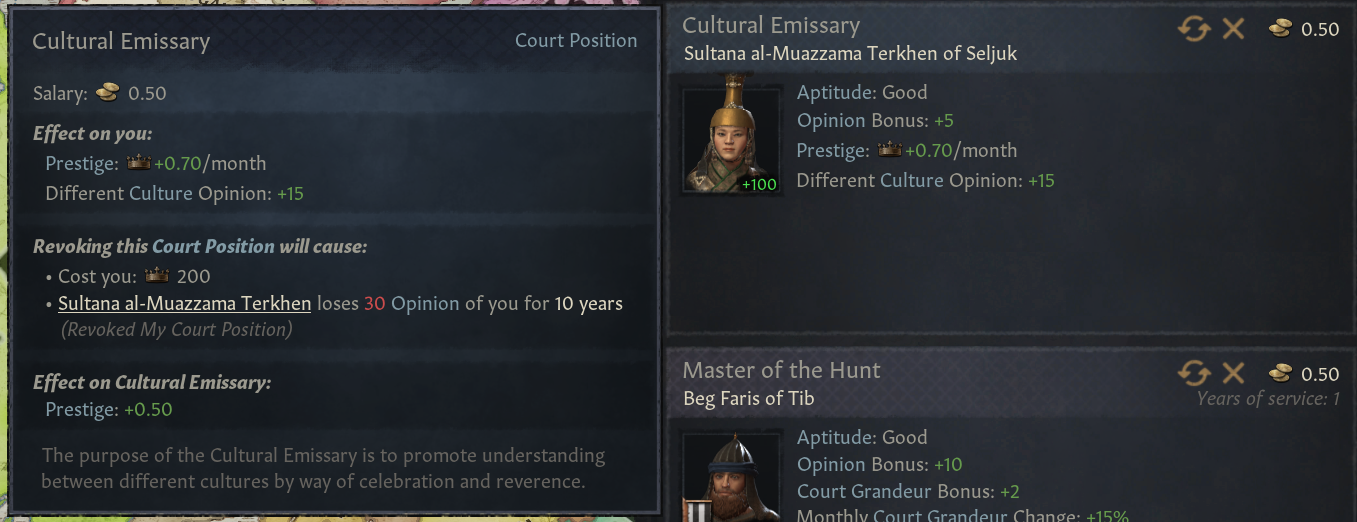
[Image of the Cultural Emissary Court Position]
Here are some details on how the position itself looks.

[Image of fifth legacy]
The last legacy focuses less on building acceptance, and more on reaping its benefits! It gives you access to a decision that, while expensive to take, improves the lands of all your realm; presuming the culture has 75%+ acceptance with yours. This can be a truly massive bonus for a large realm. Not pictured here is that it also gives you prestige.
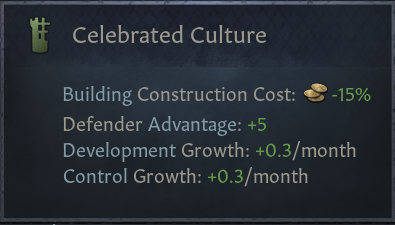
[Image of the main modifier from the Side-by-Side decision]
The main modifier of the above decision, in its current incarnation.

[Image of the new Grant To buttons]
Now, one of the hardest things to do if you want to have self-rule in your lands is actually finding someone of the correct culture. To remedy this problem, we’ve added two new buttons to the ‘Grant to…’ window. When giving away a County or Barony, you can now choose to grant it to a noble of your culture, or a noble of the local culture (faith, for now, always follows your own). If you choose either of these options, the game will firstly look for an appropriate wanderer, and if it can’t find anyone, generate a new character.
If you grant land to a local noble, you will clearly see just how much acceptance you’ll get for the act.

By this point most of the team is on vacation (including me, this is a scheduled post!). However, we still want to tease something that we think you’ll like!
With the Cultural Rework we’re making it more viable to rule a large and culturally diverse empire, as you all surely know. To enhance this playstyle we’ve devised a new Dynasty Legacy that focuses on strengthening multicultural realms! If you own the Royal Court expansion, you’ll get access to the new ‘Customs’ Dynasty Legacy!
💡 To fully experience our Teaser on the forums and share your thoughts, you can click the link below.
► Read our Winter Teaser #2 - Dynasty Legacy
💡 Enjoy the FAQ Royal Court and read all there is to learn about our upcoming Expansion

[Image of the Legacy Track Art]
Let's take a look at the Legacies themselves:

[Image of the first legacy]
The first legacy reinforces the link between learning languages and acceptance by adding a Cultural Acceptance bonus on completion for members of your dynasty. Quite a powerful opener, as it gives you a tool for improving acceptance with cultures outside your own realm (albeit a small one, though depending on how spread out your dynasty is it can be more or less powerful!)

[Image of the second legacy]
The second legacy improves the effectiveness of the Council Job, simple but effective. Having an extra slot for Learn Language schemes means that you can always have one running, while keeping your ‘normal’ personal scheme slot open for Swaying vassals or Seducing siblings.

[Image of third legacy]
When you land a ruler of a culture in the lands of their culture, you already get a Cultural Acceptance bonus. This legacy makes it an even more viable strategy to do this, as you also get a hook that you can use for all kinds of things. This pairs well with the new grant options that you’ll find at the end of this DD.

[Image of fourth legacy]
The fourth legacy unlocks a special Court Position, the Cultural Emissary. This isn’t a cheap position to fill, but it brings great benefit to realms with a diverse cast of vassals as it increases Different Culture opinion by up to 20! It also grants a lot of prestige, as an additional bonus.

[Image of the Cultural Emissary Court Position]
Here are some details on how the position itself looks.

[Image of fifth legacy]
The last legacy focuses less on building acceptance, and more on reaping its benefits! It gives you access to a decision that, while expensive to take, improves the lands of all your realm; presuming the culture has 75%+ acceptance with yours. This can be a truly massive bonus for a large realm. Not pictured here is that it also gives you prestige.

[Image of the main modifier from the Side-by-Side decision]
The main modifier of the above decision, in its current incarnation.

[Image of the new Grant To buttons]
Now, one of the hardest things to do if you want to have self-rule in your lands is actually finding someone of the correct culture. To remedy this problem, we’ve added two new buttons to the ‘Grant to…’ window. When giving away a County or Barony, you can now choose to grant it to a noble of your culture, or a noble of the local culture (faith, for now, always follows your own). If you choose either of these options, the game will firstly look for an appropriate wanderer, and if it can’t find anyone, generate a new character.
If you grant land to a local noble, you will clearly see just how much acceptance you’ll get for the act.





